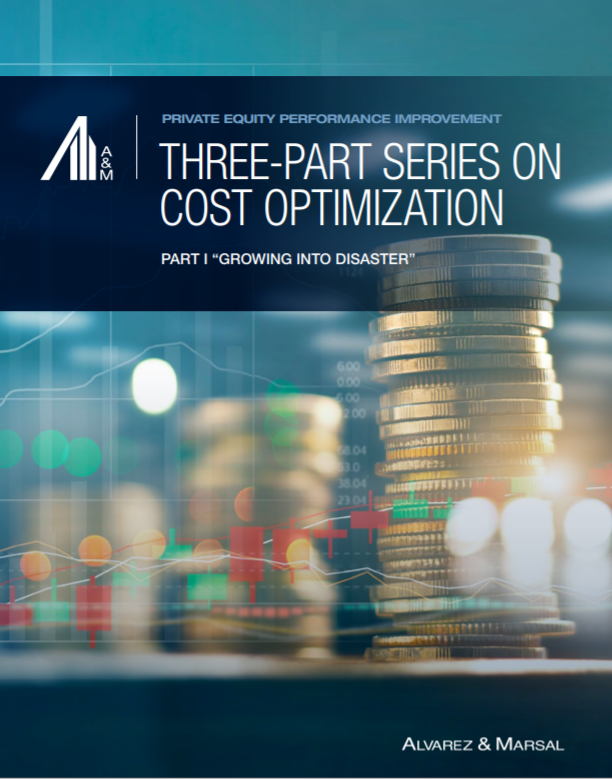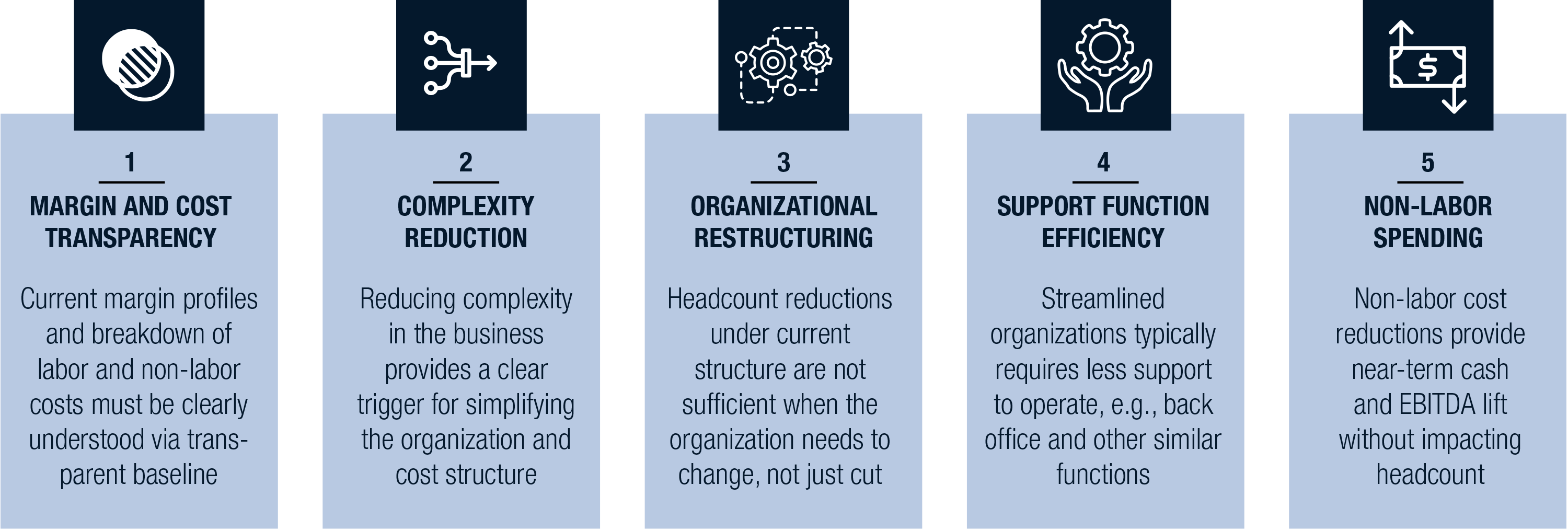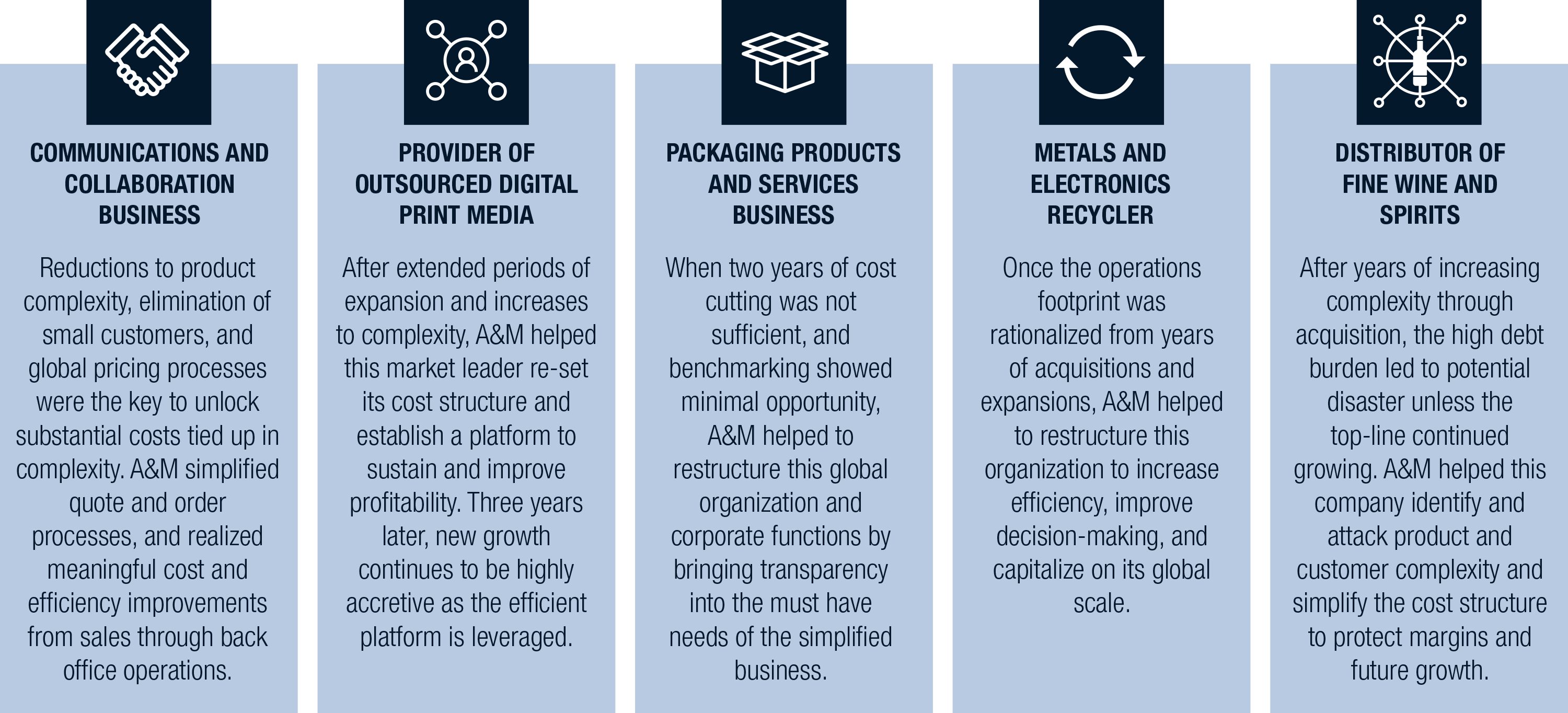Cost Optimization
Private equity investors often find themselves in situations where portfolio companies need to realize meaningful and sustainable improvements in cost structure. Companies in these situations cannot simply cut their way to efficiency – they need to change how they operate to re-set the cost structure.
Getting the right cost structure in place today is a “no regrets” decision. If the top-line dips, the business can take it. And, if the top-line grows, the more efficient cost structure will deliver increased profitability, and growth will be accretive to the platform.
 |
THREE-PART SERIES ON COST OPTIMIZATION Click here to read Part I "Growing into Disaster" |
A&M PEPI’s Cost Optimization service offering is a proven solution for delivering meaningful, step-change improvements in cost structure. By bringing transparency, reducing complexity and changing how the business operates, A&M’s approach has delivered substantial improvements for portfolio companies in these situations, and consistently strong return on consulting for our private equity clients.

- Transparency and Complexity: Bottoms-up profitability analyses of contribution by product, SKU, customer and channel help to identify the areas where complexity and cost are leading to depressed margins. A&M’s Headcount and Non-Labor Spend Cubes offer full transparency on these cost structures.
- Organization Structure: When there’s reduced complexity, opportunities to simplify the business and streamline structure are unlocked. Substantial improvements to efficiency and effectiveness are possible with a fresh, “clean sheet” look at structure.
- Back Office / Support Functions: Simplified businesses don’t need substantial corporate support. Focusing on the “must have” corporate and back office capabilities, consolidation, and shared services helps to right-size the organization based on needs of the business.
- Non-Labor Spend: “Quick win” improvements to third-party spending provide the cash needed to fund improvements. Longer-term sourcing discipline, demand management and spending controls also drive sustained efficiency.



